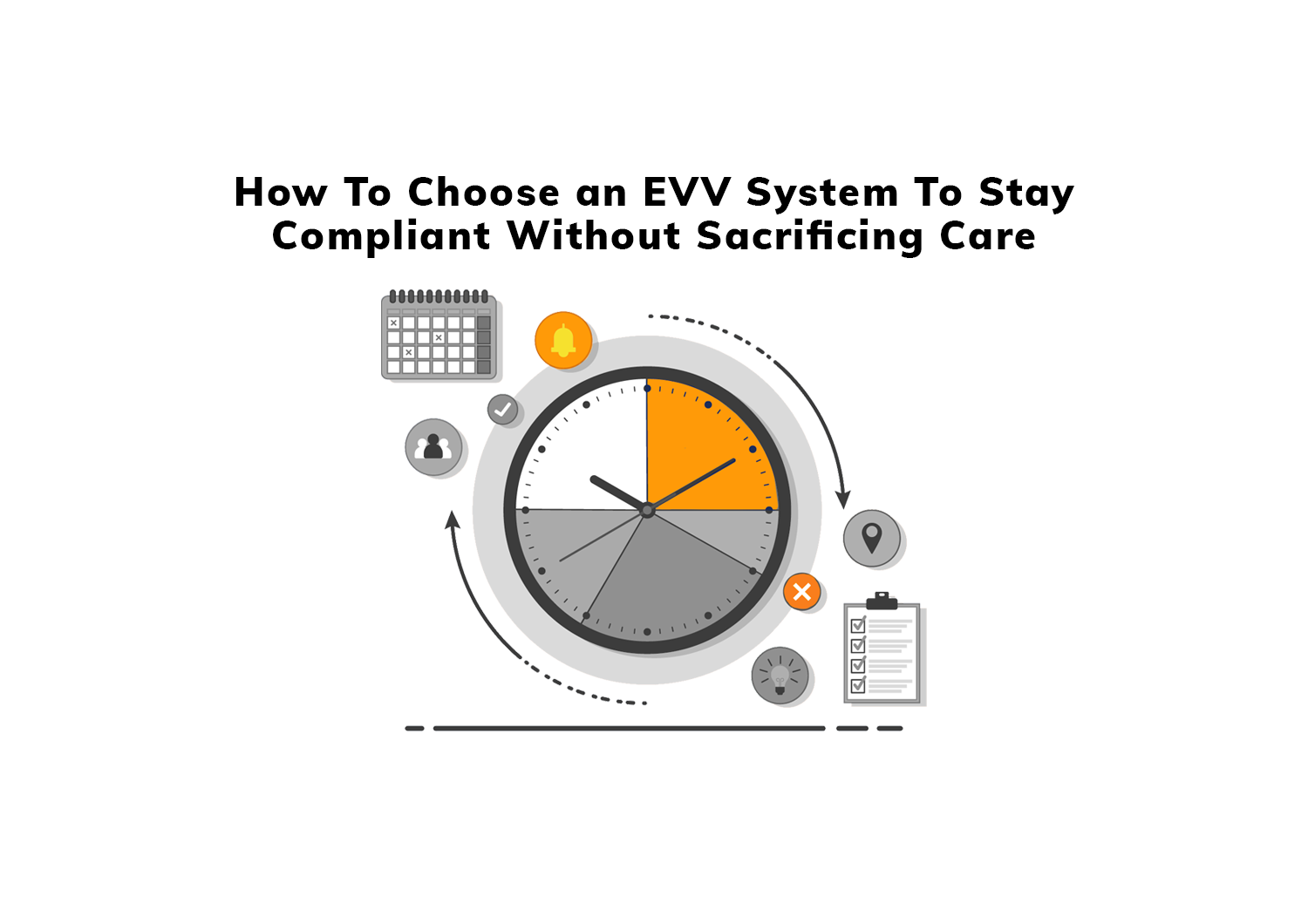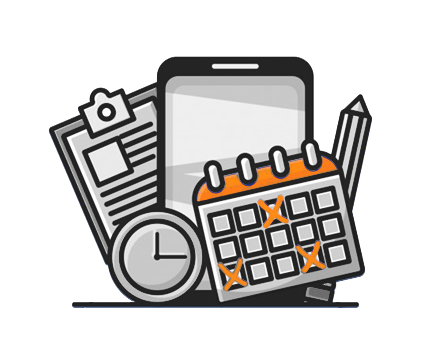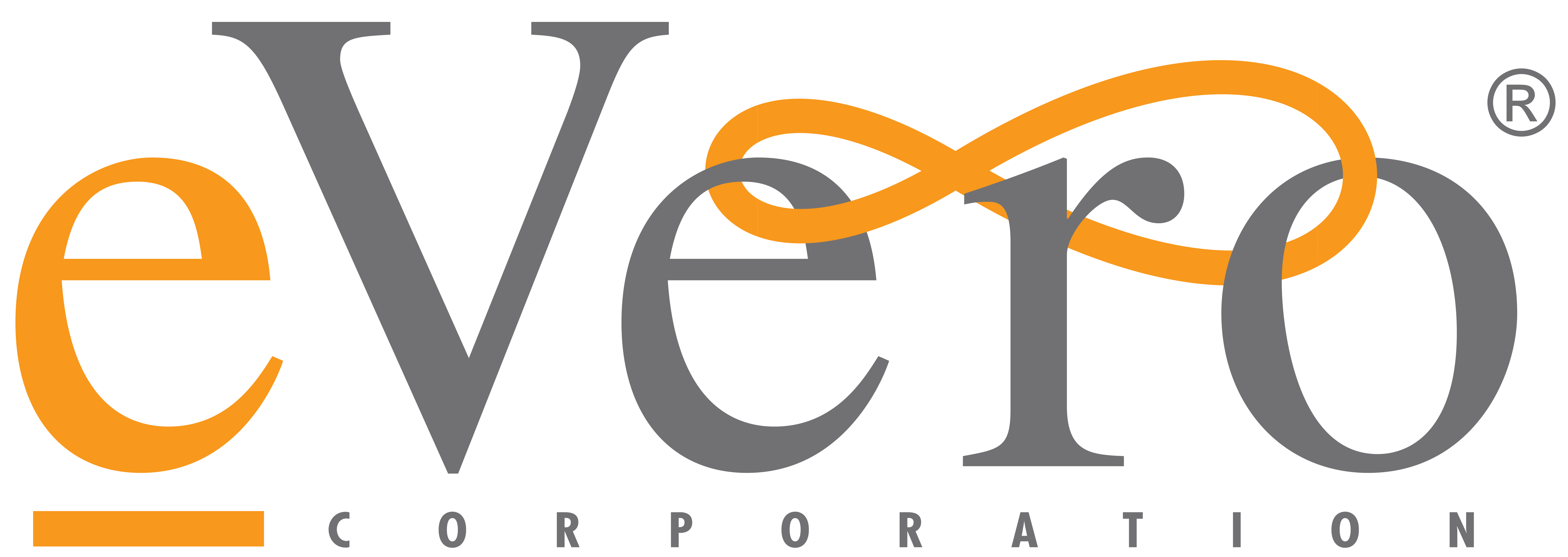
Now more than ever, people with disabilities are managing their care needs at home. This is great for their well-being and quality of life. But it also means a large proportion of their care comes from in-home care providers. And while this is positive, in-home care is uniquely vulnerable to potential fraud & abuse (e.g. billing for services not provided).
Enter: Electronic Visit Verification
In December 2016, the 21st Century Cures Act was officially signed into law. As part of the 21st Century Cures Act, agencies providing personal care and home health services are required to have what’s called an Electronic Visit Verification (EVV) solution in place. Failure to do so will lead to denial of Medicaid claims.
But why?
The answer’s simple. It’s to reduce fraud and abuse. It’s to make sure the individuals and organizations are actually providing the in-home services for which they’ve billed.
For better understanding, let’s take a closer look at EVV.
EVV: What Is It?
Before diving into the nuts and bolts of EVV, we should address the obvious first question: What is EVV?
EVV is a flexible data capture method that uses technology to collect and verify key information about personal & health care services at the point of care.
The primary purpose of EVV is to ensure that care recipients are getting the services they need. It’s also to ensure that Medicaid is being billed accurately and appropriately for said services.
And how’s that done?
It’s simple, really. The 21st Century Cares Act provides a set of requirements that all EVV systems must meet. Regarding visits conducted as part of personal care services or home health care services, the system’s technology must be able to verify:
- the type of service performed
- the individual receiving the service
- the date of the service
- the location of service delivery
- the individual providing the service
- the start and end times of the service
The system may have options of different methods to capture/verify this information. These methods depend on the technology available to the field staff at the location the care is to be provided.
Now, all these data collection requirements may raise an eyebrow and be a cause for some concerns. You may be worried about maintaining the privacy of the field staff and the person receiving care. You might be asking: “Does EVV track your location at all times?”
Perhaps you’re worried that all these requirements may take away from the quality of the care provided.
You might also be concerned that these requirements could require that the care recipient be stuck at home to receive their care— Limiting their ability to engage and participate in the community.
Listen, these are all valid concerns. After all, it’s the person receiving care that should be the centerpiece of all this, right?
Of course! And that’s where the good news comes in.
You see, as we mentioned earlier, the primary purpose of EVV is to mitigate fraud and abuse. But that’s just the beginning. There are additional benefits. For instance, it allows for the elimination of paper timesheets. This increases the efficiency of payroll-related workflow. It reduces the risk of data errors. These improved efficiencies can reduce overall administrative overhead— Saving both time and money. Another benefit is minimal time spent doing data entry. This allows the field staff to spend more time providing great care.
And if you’re worried that EVV tracks your location at all times, you’ll be happy to know that it does not. Location tracking occurs at the start time and end time. This meets the EVV requirements set by the 21st Century Cures Act, while allowing maintenance of privacy throughout the course of care.
So what’s the big takeaway?
Well, if your agency has been playing by the rules, you have nothing to worry about. In fact, with the improved efficiencies from EVV, you’re actually in a great position to be rewarded— An added bonus!
Choosing The Right EVV-Compliant System
As discussed in the previous section, EVV comes with numerous potential benefits in addition to reducing fraud and abuse. That said, a significant factor for realizing those benefits is choosing the right EVV system.
Here are some key considerations when evaluating EVV systems.
- Accessibility
In addition to verifying the system in question meets all the EVV requirements outlined earlier, you should also consider its accessibility. The ideal system should be user-friendly & able to meet the needs of individuals, regardless of their types of disability.
The system should also be “minimally burdensome.” What does “minimally burdensome” mean?
It means the system in no way restricts or impacts the field staff’s ability to deliver quality care to the care recipient.
- Consumer-Empowerment
Adding to accessibility is the need for a system that’s consumer-empowering. This is especially true in the case of individuals that have elected self-directed care services.
When evaluating an EVV system, you must be certain the system does not bypass any aspect of the care recipient’s involvement/participation in their care plan.
This is true even if the system has superior capabilities. It’s a classic case of “just because it can doesn’t mean it should.”
- Flexible Visit Verification
Every care situation comes with its own unique challenges. Availability of technology (or lack thereof) is one of those challenges. When considering EVV systems, you want to know if the system is flexible enough to collect the required data in the most and least tech-enabled scenarios. Examples of these scenarios include:
Field Staff Has Access to a Smartphone/Device
Field Staff Lacks Smartphone/Device but a Landline is Available
Field Staff Lacks Smartphone/Device & a Landline is Not Available
If a smartphone is available, the system may use a GPS-enabled application to collect the required data. The system could also be web-based or mobile app-based.
If there’s no smartphone available but the individual receiving care has a landline, the system may allow landline use to collect the needed data.
But if neither a smartphone nor a landline is available, what then?
Perhaps the system is able to collect the required information using a Fixed Object (FOB) device. This is a device that is secured at the location of care. When turned on, it generates a unique random code/number. This code corresponds to time. This allows the field staff to accurately log their start and end times.
- Location Independence
Another key factor to consider is whether the system is flexible enough to account for care that occurs in any location. That includes locations outside of the care recipient’s home.
This is important because, as discussed previously, an individual’s ability to engage and participate in the community is important for maximizing their quality of life.
So an EVV system’s ability to collect the required information while also allowing these individuals the flexibility to receive their care in the home and outside of the home is an important consideration.
As with all technology, there’s no such thing as a magic bullet. And that’s also true when it comes to managing EVV compliance. But EVV doesn’t have to be a chore. Partnering with the right EVV vendor will ensure you’re EVV-compliant, without sacrificing your quality of care.
eVero integrates various methodologies of EVV into all its software platforms. This ensures that all agencies are EVV-compliant, regardless of which platform is used. Learn more here about all of eVero’s unique EVV capabilities.



